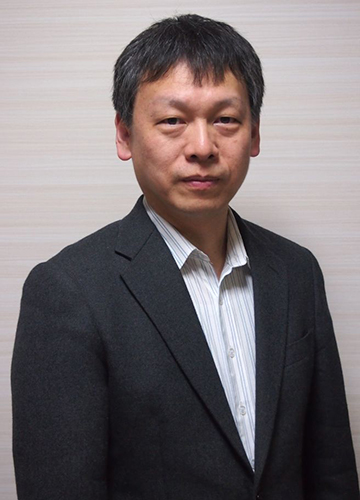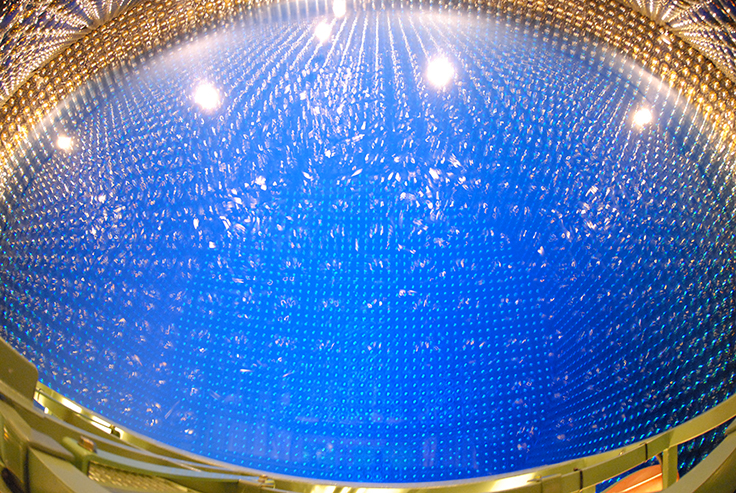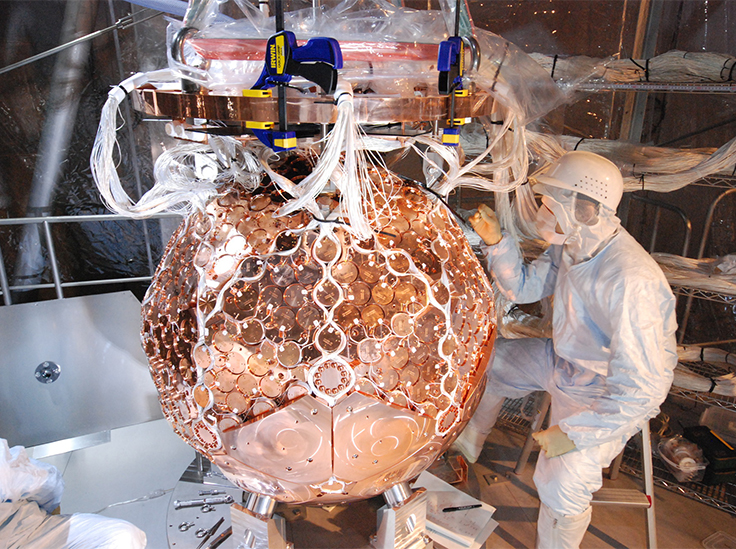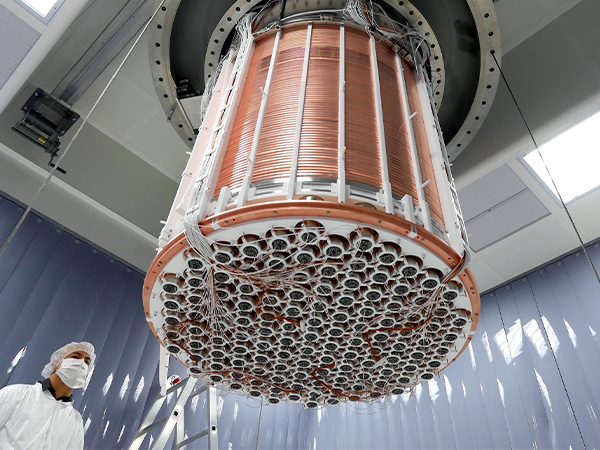Kobe University professor Yasuo Takeuchi uses remarkable subterranean detectors to hunt the hidden forces holding galaxies together.

Yasuo Takeuchi’s first visit to the Kamioka Observatory, nestled deep in the mountains near Hida, central Japan, was initially confronting. Squeezed into a small truck alongside construction workers, the then-graduate student was struck by the remoteness of this former zinc mine, as he travelled 1,000 meters below the Earth’s surface. But his mood quickly changed when he reached his destination: an enormous chamber that would be transformed to the heart of the Super-Kamiokande project for spotting extraterrestrial neutrino particles.
“I was impressed when I saw the cavity — the space was huge, just huge,” recalls Takeuchi. “When I realized how large a detector could be built in this space, I was really excited.”
The 1990 trip encouraged Takeuchi to join international efforts to track down exotic dark matter particles that take up an estimated 25 per cent of our Universe’s mass, but cannot be observed with conventional telescopes. Now, as chair of Kobe University’s Department of Physics, he is training the next generation of scientists in specialized techniques for detecting subatomic particles.
Beyond the ordinary
The central core of the Sun is a nuclear fusion reactor that transforms protons into energy, charged particles, and electrically neutral neutrinos. Even though many billions of neutrinos pass through the Earth every second, they only interact with other particles through the so-called ‘weak’ nuclear force that is many times smaller than standard electromagnetic interactions. The only way to see them is inside massive tanks of ultra-pure liquids, buried deep underground to avoid interference from cosmic rays and other background radiation. Occasional collisions between neutrinos and atoms inside the liquids can eject electrons that help identify the particle’s direction and nature.
For the Super-Kamiokande-I experimental phase from 1996 to 2001, Takeuchi was a major developer of techniques to analyze low-energy neutrinos and purify almost 50 million kilograms of water inside the underground detector1. In 1998, the experiments proved that neutrinos oscillated into different elementary species, or flavors, after being ejected from the Sun2. The changes in neutrino flavors proved they had mass — a stunning challenge to the ‘Standard Model’ used by particle physicists to understand all forms of matter and energy, because this theory had assumed neutrinos to be massless.
“Today, research into neutrinos can help us consider what physics exist beyond the Standard Model,” says Takeuchi. “This is key to extending our knowledge of elementary particle physics.”
Dark matter drift
Super-Kamiokande’s observation of neutrino mass also showed they were too light to be the primary component of dark matter. Instead, physicists now theorize that subatomic particles left over from the Big Bang, named WIMPs (weakly interacting massive particles), might be the missing components of dark matter. Takeuchi has spurred efforts to construct another detector in the Kamioka mine, known as XMASS, that uses a one-ton tank of liquid xenon cooled to -100°C to observe collisions between WIMPs and the frigid noble gas.
One intriguing aspect of the XMASS experiments lies in the fact that dark matter is usually assumed to be static, while our spiral-shaped Milky Way Galaxy is constantly rotating. “Therefore we should feel a wind of dark matter on the Earth,” explains Takeuchi. He and his team are currently investigating how the Earth’s seasonal variations might affect this dark matter drift, in collaboration with Kentaro Miuchi from Kobe University, who manages a direction-sensitive detector at the Kamioka Observatory known as the NEWAGE experiment.
Although academic business and undergraduate teaching take up a significant proportion of Takeuchi’s schedule, he still makes time to stay on the front line of dark matter and neutrino research. He organized the recent International Workshop on Dark Matter Searches at the Kobe University Brussels European Centre in November 2014; and is developing an automated calibration system for the planned Hyper-Kamiokande detector, designed to be 25 times larger than the Super version.
“Improving the sensitivity of the underground experiments is what we need to push our research forward,” says Takeuchi. “Direct detection of dark matter could sharply clarify understandings of our very nature.”


References
- Hosaka, J. et al. Solar neutrino measurements in Super-Kamiokande-I. Physical Review D 73, 112001 (2006).
- Fukuda, Y. et. al. Measurements of the solar neutrino flux from Super-Kamiokande’s first 300 days. Physical Review Letters 81, 1158–1162 (1998).





